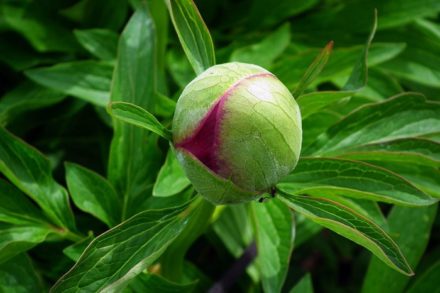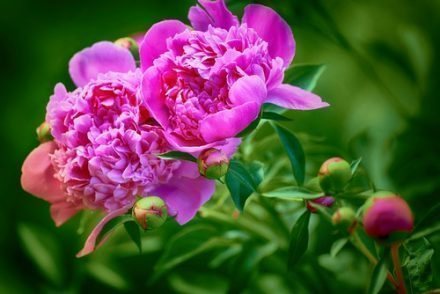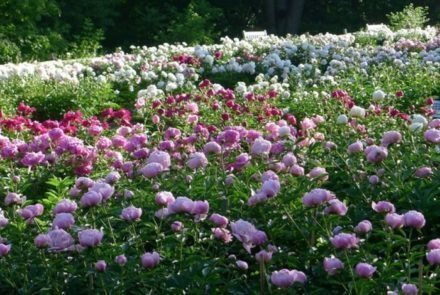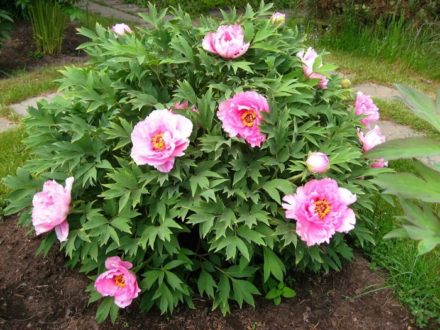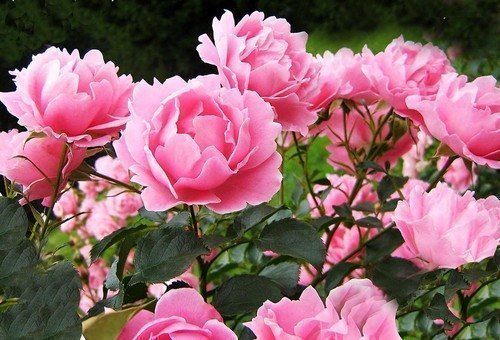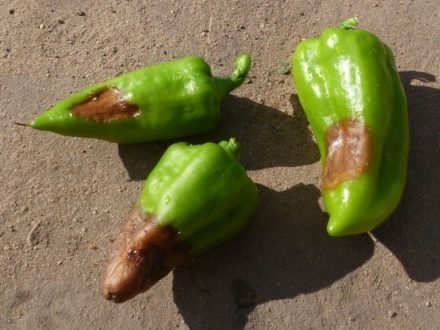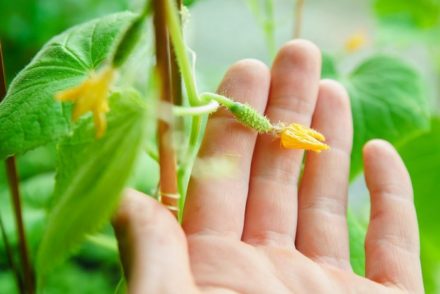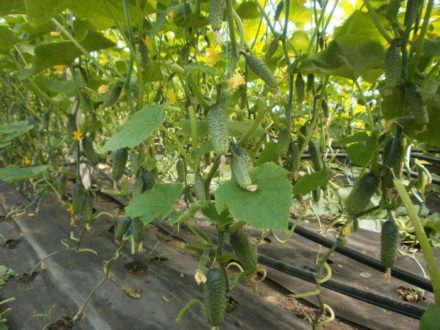Peonies are characterized by short but very spectacular flowering. At this time, large caps of white, pink, and crimson flowers bloom on the plant. Sometimes, for some reason, the peony stops blooming or the quality of flowering decreases. Most often this happens due to lack of care for the plant after the buds have withered. The list of summer activities includes several important tasks, the implementation of which will allow you to enjoy the flowering of peonies next season.
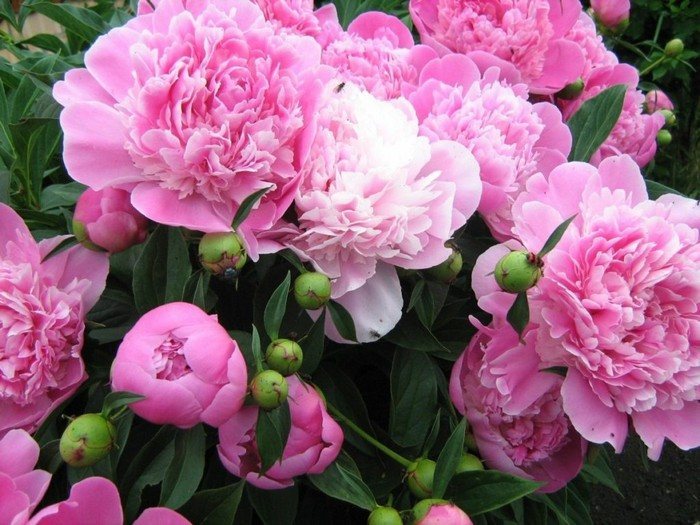
Watering peonies after flowering
Some people mistakenly believe that peonies need to be watered until they bloom. In fact, flowers also need moisture in the middle of summer, when renewal buds form. The ground under the peonies is regularly moistened in July and the first half of August. During warm weather, watering is carried out once every 2 weeks, pouring 2-3 buckets of water under each bush. If the summer is cool and it rains, the plants are watered once a month. Before wintering, water-recharging irrigation is carried out.
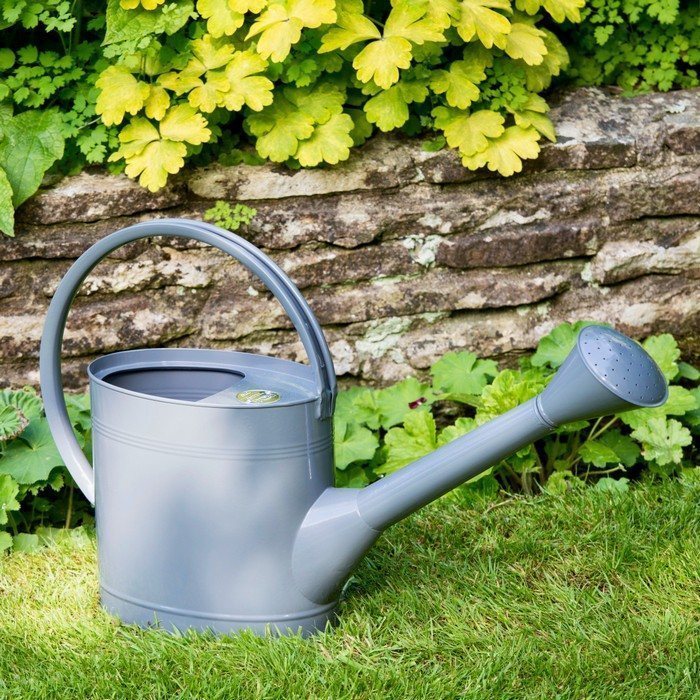
Mandatory feeding
A peony can grow in one place for many years. Over time, the soil becomes depleted, so it is necessary to replenish the supply of nutrients, otherwise there will be no quality flowering. Nitrogen fertilizers are traditionally applied at the beginning of the season. After flowering, peonies need fertilizing with a predominance of phosphorus and potassium.
Fertilizer should be applied in August.Feeding should especially not be skipped if this season the bushes had small flowers that quickly withered and pale leaves. Fertilizer granules can be applied in dry form. To do this, use per 1 sq. m:
- 25–30 g superphosphate;
- 20 g potassium magnesia;
- 15 g potassium sulfate.
You can add 45–50 g of potassium monophosphate, which contains 2 essential elements at once. Chemical fertilizers will be replaced by wood ash (spread 200 g under the bush and water). Fertilizers in liquid form are also well absorbed by peonies. For this purpose, a complex composition with macro- and microelements is used.
Watering a fertilizer solution into the hole has worked well. 3-4 holes are made along the perimeter of the bush, into which sections of water pipe are inserted. Thus, the nutrient solution goes directly to the roots of the plant. Towards mid-autumn, the soil is mulched with compost, which will gradually feed the plant until spring.
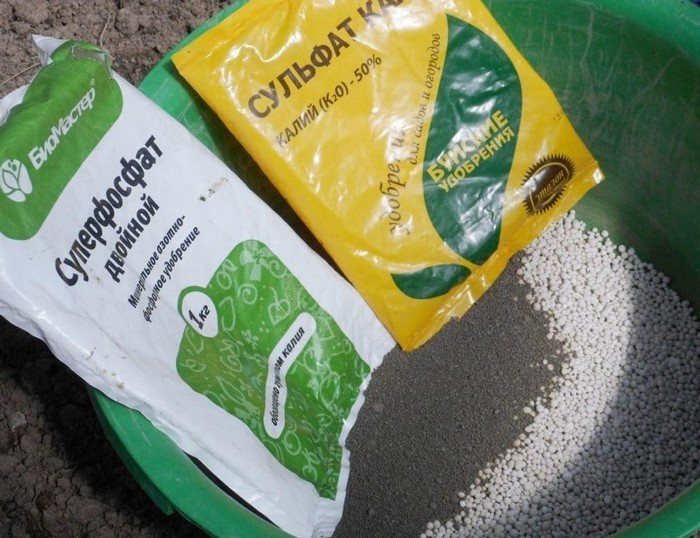
Protection against fungal diseases and pests
If it's a cold and rainy summer, peonies can get a fungal infection. In this case, the plants will be weakened and will need restoration. Of course, in this case, peonies will not bloom well. The crop can be affected by various rots, rust, brown and brown spots, and powdery mildew.
For prevention, fungicides are applied three times a season. Suitable:
- "Fundazol";
- "HOM";
- "Topaz";
- "Strobe".
All drugs are used according to the instructions. Leaves with signs of damage are immediately removed to prevent the disease from spreading.If pests (aphids, thrips, bronze beetles) are noticed on peonies, they are eliminated using insecticides.
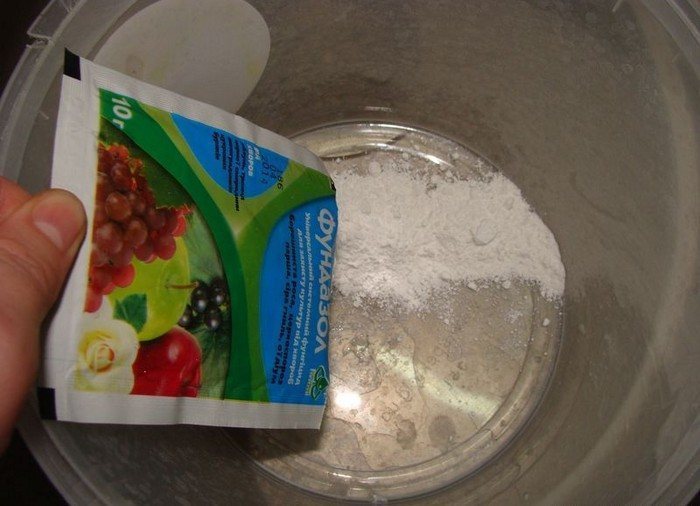
Dividing an overgrown bush
Over time, the peony bush grows greatly. As a result, the quality of flowering decreases. To return the plant to its ability to bloom magnificently, the bush must be divided into several parts, each of which is planted in a new place. The procedure is carried out in the second half of August.
First, the stems are shortened to a height of 20 cm. Then the bush is dug in a circle, retreating 30 cm from it. After this, the rhizome is loosened and carefully removed from the ground, trying to cause minimal damage. Then the roots are cleaned of adhering soil, inspected, and damaged or rotten areas are removed.
Divide the bush by driving a wedge into its center. Each division should have several developed buds and a sufficient number of roots. Peonies are planted in a hole with a diameter of 50–60 cm, filled with nutritious soil with the addition of humus. Drainage made of broken bricks or stones is pre-laid at the bottom.
After planting, the root collar should be flush with the soil surface. Plants are watered abundantly. If dividing the bush and planting were carried out according to the rules, the plants will bloom the next year.
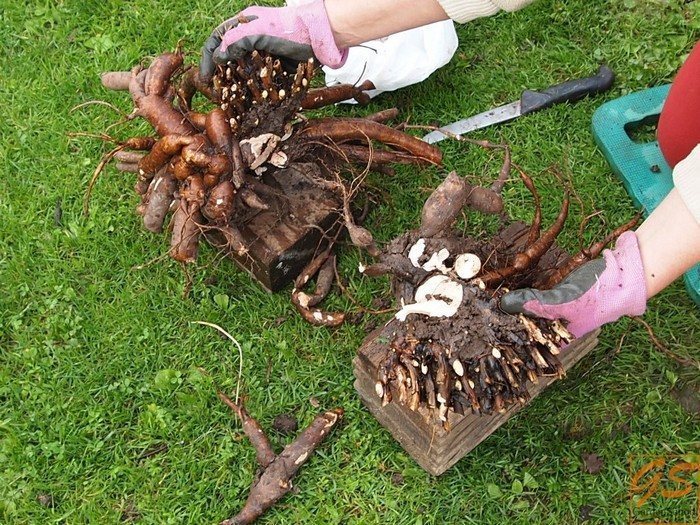
Before wintering, the stems are cut at the root, trying not to touch the recovery buds. If the rhizome of an old bush is exposed, it is sprinkled with fertile soil. Taking care of the plant during the summer and autumn will provide a return in the form of beautiful peony blossoms in the new season.


